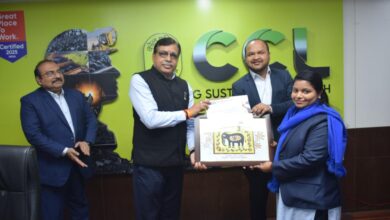Implications Of The Union Budget On India’s Sustainable Development
The budget also prioritises boosting domestic manufacturing in key clean energy areas

India’s tax-payer friendly budget has signaled a boost to its ongoing efforts towards cleaner energy and transport systems. The Budget 2025 has introduced several measures to support domestic clean technology manufacturing, expand credit access, and enhance climate resilience in agriculture.
A notable provision is the expansion of the credit guarantee scheme, which is expected to unlock ₹1.5 lakh crore in additional credit over the next five years for MSMEs, startups, and exporters. This support is aimed at strengthening industries including clean technology and renewable energy.
India’s Union Budget takes a critical step forward by incentivizing electricity distribution reforms and enhancing intra‐state transmission capacity, which will undoubtedly improve the financial health of our DISCOMs—the linchpin of the renewable energy transition. However, while measures like the Revamped Distribution Sector Scheme have already helped trim subsidies by about 3% .
The budget also prioritises boosting domestic manufacturing in key clean energy areas. It focuses on increasing capacity in sectors such as solar PV cells, EV batteries, motors and controllers, electrolysers, wind turbines, high-voltage transmission equipment, and grid-scale energy storage. To further support local production, basic customs duties have been removed on cobalt powder, lithium-ion battery scrap, lead, zinc, and 12 additional critical minerals—a follow-up to the July 2024 policy that exempted 25 key minerals from import duties. This measure is expected to lower input costs, secure raw material supply chains, and promote job creation in renewable energy and electric mobility sectors. It also has the potential to spur investments in domestic manufacturing and promote sustainable mobility in India. The EV industry, which was looking forward to a favourable tax structure that caters to different automotive technologies, did not find a mention in the Union Budget. The specific focus on Budget 2025 on clean tech manufacturing is obviously a welcome step. We must do all we can to produce in India .
Missing from the budget was any mention of PM-KUSUM—a beacon for transforming agriculture that now goes largely unnoticed. Earlier last year, the scheme received an extension till 2026 – that is a positive step, but without a clear political push in the budget, the signal to states and private developers remains dim, leaving a golden opportunity.
In the agricultural sector, the budget has announced the National Mission on High Yielding Seeds. This mission will focus on enhancing research, developing pest-resistant and climate-resilient crops, and ensuring the commercial availability of over 100 improved seed varieties released since July 2024. Alongside this, the Kisan Credit Card (KCC) loan limit has been increased from ₹3 lakh to ₹5 lakh, providing greater financial flexibility for around 7.7 crore rural entrepreneurs to invest in agricultural productivity and rural livelihoods. This has the potential to boost credit availability for climate-friendly agricultural practices.
Finally, the budget announcement about renewed support for nuclear energy with the introduction of a ₹20,000 crore Nuclear Energy Mission aimed at developing Small Modular Reactors (SMRs), signals India’s focus on cutting emissions in energy production. The initiative targets the operationalisation of at least five indigenously developed SMRs by 2033, positioning nuclear energy as a secure, low-carbon option to support long-term energy security and sustainability.
The Prime Minister Dhan-Dhaanya Krishi Yojana that targets 100 districts with low productivity by boosting agricultural output, promoting crop diversification, and enhancing post-harvest storage and irrigation, can add immensely to India’s climate adaptation efforts. Modernising agriculture and diversifying rural income sources alongside improved credit access for farmers, can reduce the risks of climate variability while increasing productivity. The six-year Mission for Aatmanirbharta in Pulses reinforces this approach by seeking to leverage past successes in food security and sustainable practices.
The reforms can be complemented by the Rural Prosperity and Resilience programme that seeks to to generate diverse employment opportunities in rural India, according to the minister. Focus on under-employed groups—including rural women, young farmers, and landless families—and incorporating global best practices and multilateral support, can help improve long-standing economic vulnerabilities, making more resources available to climate-hit communities.
Also, the Urban Challenge Fund announced in the budget that seeks to allocate up to 1 lakh crore rupees to modernise urban infrastructure and boost climate adaptation in Indian cities seeks to support projects under initiatives such as ‘Cities as Growth Hubs’, ‘Creative Redevelopment of Cities’, and improved ‘Water and Sanitation.’
The fund can help enhance the capacity of urban areas to adapt to extreme weather, mitigate urban heat islands, and manage water resources more effectively. With a financing model covering up to 25% of project costs—requiring at least 50% funding from bonds, bank loans, and PPPs—and an initial allocation of ₹10,000 crore for 2025-26, the initiative is designed to drive resilient urban growth while integrating adaptation measures into the redevelopment process.
The writer of this article is Dr. Seema Javed, an environmentalist & a communications professional in the field of climate and energy




